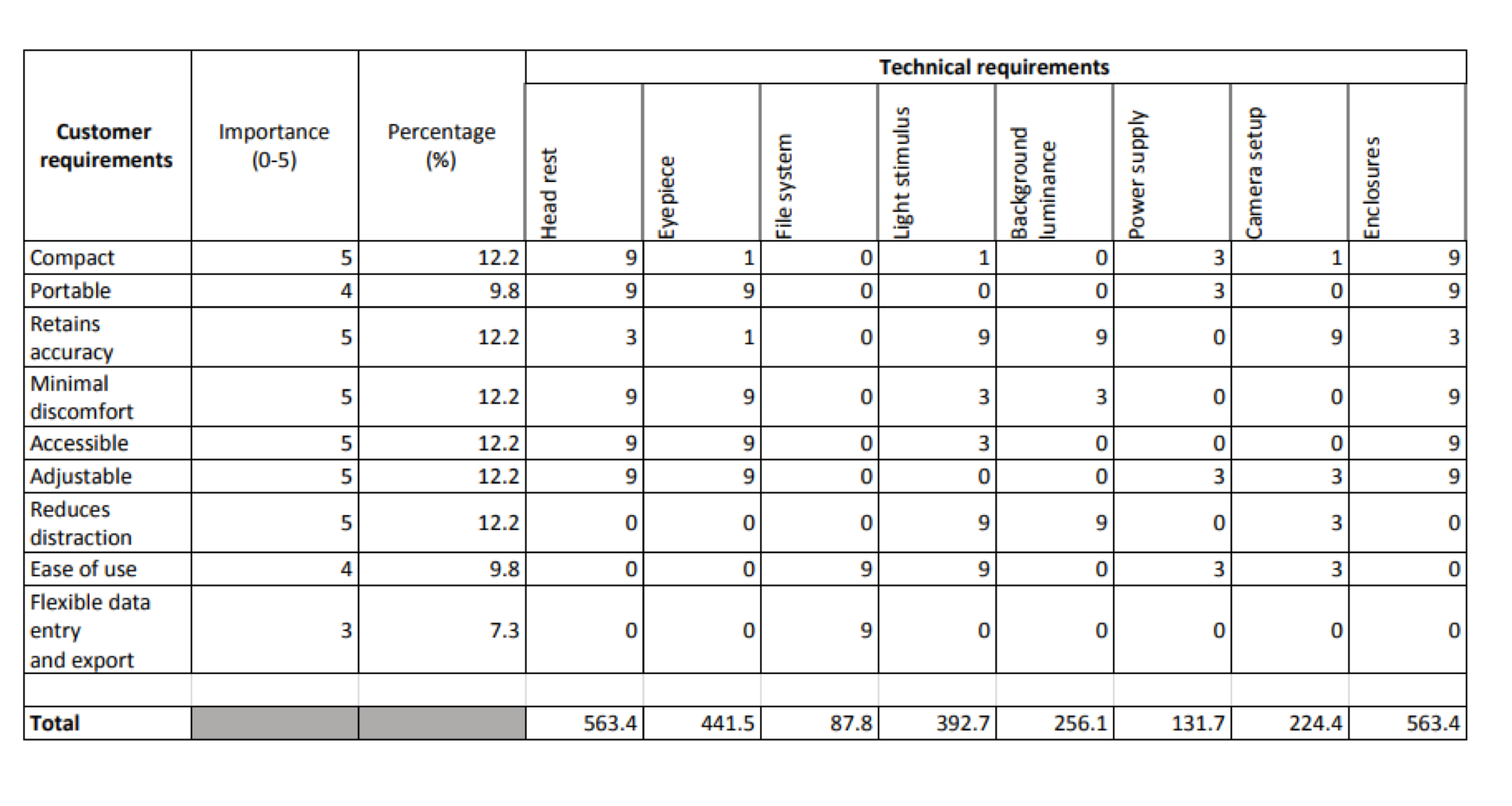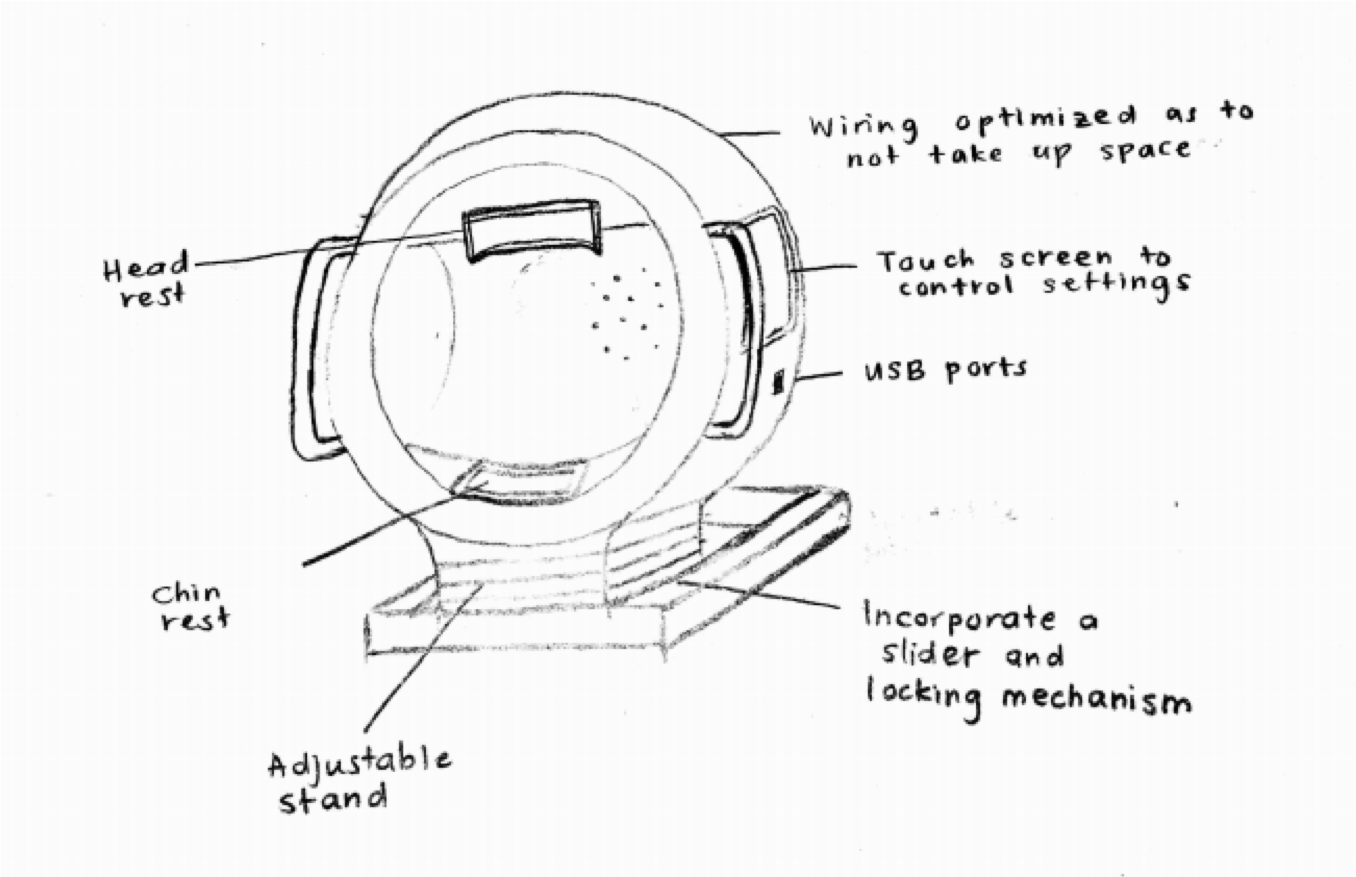January 19, 2018
Posted by wordae on Friday, January 19, 2018 in Uncategorized.
This week our team has created a quality function deployment (QFD) for our device based on the comments we obtained from physicians and technicians t the Vanderbilt Eye Institute in December (below). The design factors that we identified as most important to our designs are the headrest, eyepiece, and device enclosure.

A QFD based on comments from physicians and technicians at the Vanderbilt Eye Institute about the problems associated with on-market perimeters.
The QFD helped inform the four designs that we each separately formulated this week. Khairah and Anna each created one design, and Sophie created two. All are designed for more portability and adjustability than Halma’s current device. Judy also translated one of Sophie’s designs into a rough CAD model.

Khairah’s design is a downsized, more streamlined version of Halma’s current prototype. It incorporates an adjustable stand and a slider to position the dome.

Sophie’s first design is a handheld device that allows for maximum portability and accessibility. The ophthalmologist selects a test before holding the device in front of the patient’s eye. The LEDs would be placed in the eyepiece, along with cameras to properly align and analyze the pupillary light response.

Anna’s design is similar to a virtual reality headset and includes three main components: the device itself, which houses everything needed to administer the test; a headset; and a stand.
This version of the device allows for maximum accessibility and provides the patient with several options for how to take the test.

A still photo showing a CAD model based on Sophie’s second design. A video of this design can be found here.
This week Judy has also been working on identifying contraindications that would interfere with our test. She identified several SSRI, SNRI, and acetylcholinergic medications that have vision-related side effects such as blurry vision that could alter the accuracy of the test. This important because we want to ensure that no population is barred from using this device because of their medications.
In the future, we will be creating more detailed CAD models based on feedback that we plan to obtain from the Vanderbilt Eye Institute. Additionally, Judy will do research to expand our current list of contraindications.